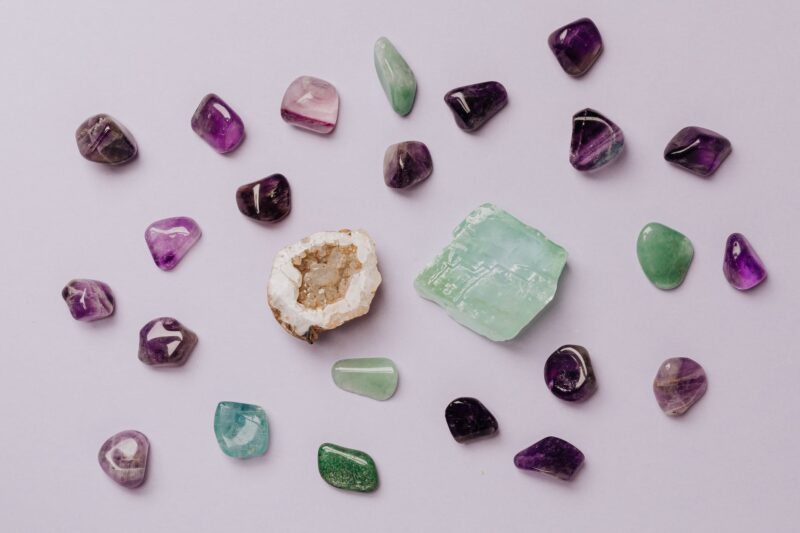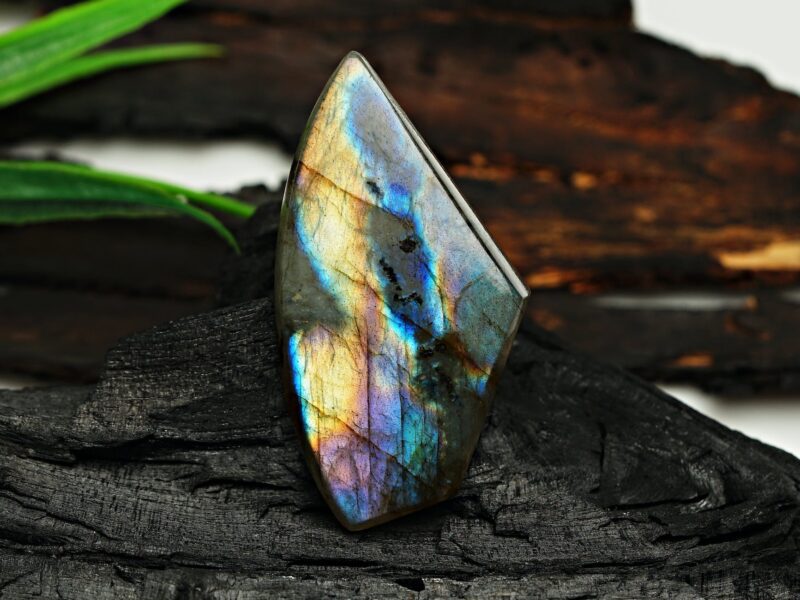Since the beginning of human history, lapis lazuli has been one of the most sought-after gemstones. Its rich, heavenly blue continues to be a representation of majesty and honor, deities and strength, spirit, and vision. It represents wisdom and truth.
Lapis lazuli was highly prized in ancient times for its exquisite hue and the priceless ultramarine dye it yielded. Its name is derived from the Latin words lapis, meaning “stone,” and lazhward, meaning “blue.” It is a rich medium-to-royal blue rock with gold specks made of several minerals, primarily lazurite, sodalite, calcite, and pyrite (pyrites). Lower-grade lapis, often known as denim lapis, is a lighter shade of blue with more white than gold particles.
Lapis Lazuli, which is still mined today from the world’s oldest mines, was among the most valuable tributes sent to Egypt. It dates back to roughly 4000 B.C. Lapis Lazuli, referred to in the Old Testament as sapphire (which was unknown in that region of ancient history), is probably the fifth stone in both the original and subsequent versions of the High Priest’s breastplate.
King Tutankhamun’s golden tomb and other Egyptian monarchs’ and queens’ funeral accouterments were beautifully encrusted with lapis. It was also pounded into powder for colors, eye shadow, and medicinal elixirs and extensively utilized in scarabs, pendants, and other jewelry.
This rich cobalt blue shade stood in spiritual contrast to the Egyptians’ harsh desert tones in their dry, desolate homeland. They compared the gold flecks to stars in their nighttime sky and believed that mystical forces would change their lives by focusing on these colors. Lapis was used to color the robes of priests and princes to signify that they were gods in their own right.
Lapis lazuli was a popular stone of the Islamic Orient for protection from the evil eye and was a symbol of the starry night in pre-Columbian America and ancient Persia. Lapis was a popular ornamental stone in ancient Greece and Rome. In medieval Europe, lapis lazuli, which resembles the sky’s blue, was thought to ward off evil spirits and win the support and favor of wise and enlightened ones.
It provided a pricey but intense ultramarine color that Michelangelo, the painter, favored. It was ground and processed into a powder. The ultramarine tempera paint made from lapis lazuli was exceedingly expensive for artists utilizing blue colors in Medieval illuminated manuscripts and Renaissance paintings. When oil paint was developed during the Renaissance, artists discovered that the magnificent blue of ultramarine was weakened when blended with oil, therefore its use dropped. Although most artists nowadays utilize synthetic blue colors, there are still a few pigment businesses that manufacture genuine ultramarine.
In the Renaissance, Catherine the Great filled a whole chamber in her palace with Lapis Lazuli walls, fireplaces, doors, and mirror frames in order to promote inner serenity and independence from negative thought.
Lapis lazuli is possibly the oldest rock to be classified as a gemstone. Pharaohs cherished its stunning deep blue color in ancient Egypt, and it is still prized today. The finest specimens have tiny flecks of golden pyrite that identify the stone as genuine.
The most magnificent lapis lazuli originates from Afghanistan, where the mines that are still in use today may have been used to obtain stones for the pharaohs. Lapis has also been discovered in the Andes, as well as to a smaller extent in Russia, Angola, Burma, Canada, and California and Colorado in the United States, although none of these stones have the same vivid, intense blue as those found in Afghanistan.
The Assyrians and Babylonians utilized lapis lazuli for seals, and the Egyptians preferred it for amulets. Powdered lapis was used as eye makeup by Egyptian women, and the Romans thought it was a potent aphrodisiac.
Lapis lazuli may be carved into figures, statuettes, and vases, and it can be polished to produce lovely jewelry. The ancient Sumerian graves around the Euphrates River in the lower regions of Iraq yielded thousands of carved lapis lazuli items, and artisan craftsmen continue to use this magnificent stone in parts of Afghanistan.
Lapis is an excellent stone for business leaders, journalists, and psychologists since it encourages knowledge and sound judgment in real-world situations. It supports intellectual analysis in historians and archaeologists, problem-solving in lawyers, and the generation of fresh ideas in writers and inventors.
A potent gem for opening the higher consciousness and boosting intelligence is lapis lazuli. It encourages the pursuit of information, accuracy, and comprehension and facilitates learning. It works wonders to improve memory.
Lapis, a stone of truth, promotes spiritual honesty as well as truthfulness in spoken and written language. For all kinds of deep communication, wear it. Additionally, it is a stone of friendship and promotes peace in partnerships. For a family with irrational teenagers or children with Asperger’s syndrome, autism, or attention deficit disorder, a Lapis grid promotes loving and peaceful communication.
Wear or bring lapis lazuli to auditions if you want fame in the artistic or performance-related fields. It draws promotions, success, and long-lasting recognition in your industry at work.






